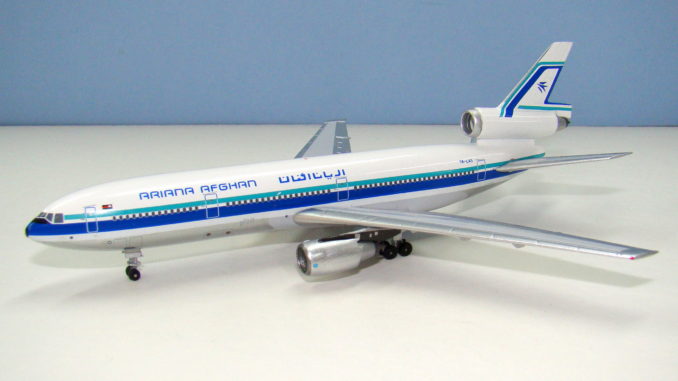
Afghanistan has had a complicated history to say the least but since 1955 Ariana Afghan Airlines has mostly kept itself in the air serving the war torn nation. In fact until the mid-1980s the fleet was Western and relatively modern. This even included a single DC-10 and this colourful aircraft has long been a missing feature on the 1:400 scene, being the perfect sort of charismatic and relatively obscure beauty to stoke the credit cards of any historical collector into action. Pleasingly Aeroclassics have taken note of this and in May they produced what sounds like a limited release of the Afghan ten.
THE REAL THING
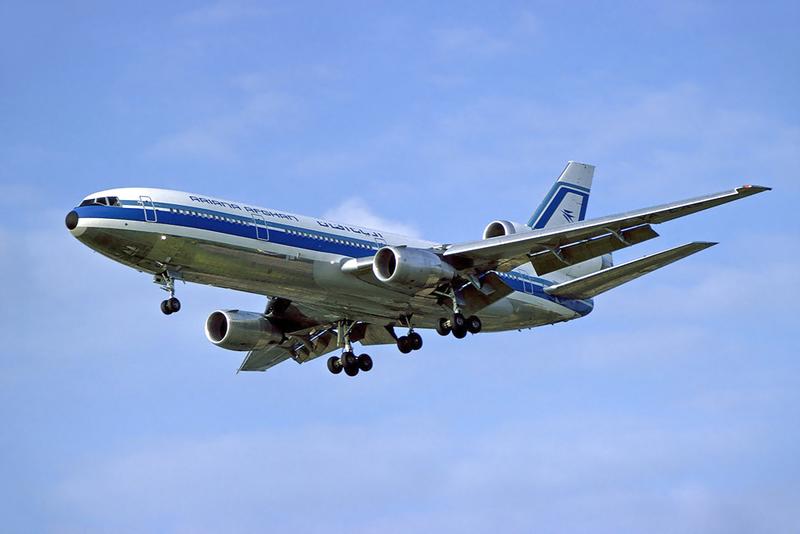
Afghanistan had cannily managed to play both sides of the Cold War off to its own benefit for much of the postwar period, however the bloodless coup of 1973, which deposed King Mohammed Zahir Singh was the first of a series of forced changes in power that have continued to the present. The socialist Saur Revolution of 1978 established the Democratic Republic of Afghanistan and launched a civil war, which was in hindsight just the beginning of Afghanistan’s problems.
Obviously this did not have a positive impact on the operations of Ariana Afghan Airlines, which had actually been upgrading its fleet with Boeing 727-100s since 1968 and on September 21, 1979 reached its pinnacle with the delivery of its first widebody: a brand new DC-10-30 registered YA-LAS.

The invasion of Soviet forces in December 1979, and their installation of a puppet regime in Kabul, meant that the DC-10 entered into service in an escalating warzone. Nonetheless the DC-10 continued to serve both London and Frankfurt despite the dangerous conditions that actually saw it struck by small arms fire, damaging the no 1 and 3 hydraulics systems, on September 21, 1984.
The end was nigh for the DC-10, which apparently the Soviets wanted sold. It is however hard to see how it could have been kept in operation for much longer and I suspect that given the dire situation inside Afghanistan it probably offered rather more capacity than was needed on the routes served anyway. The aircraft was sold to British Caledonian in March 1985 and became G-MULL. She was transferred to British Airways and gained the name ‘New Forest, in 1988 and served for over a decade from Gatwick until March 1999.
Converted to a freighter she joined Centurion Air Cargo in late 2001 and operated for them until being sold for parts in September 2008. Ariana Afghan would not receive another widebody until the gift of a trio of banged up ex-Air India A300s in 2002.
THE MODEL
The format for my reviews is to split them into three key areas:
- The mould of the aircraft
- The paint and livery
- Printing and quality control
Each can get a maximum score of 10 for a section giving a maximum combined total score of 30.
THE MOULD
The Aeroclassics DC-10 mould is one of their finest mouldings and arguably the best DC-10 ever produced in 1:400 scale. See my DC-10 mould review for a more detailed comparison. The shape of the nose and fuselage is effectively perfect whilst the wings and engine pylon/nacelle combination are also top quality.
The nosegear on Aeroclassics DC-10s comes separated in a little bag so as to avoid breakages during posting. This is great but you do have to pay attention to fit it correctly since neither the gear doors or gear leg is symmetrical.
If the Aeroclassics DC-10 does have a failing it is the tubelike shape of the tail mounted engine, which isn’t as curvy as it ought to be. Aeroclassics has three different engine exhaust options to cover the six possible exhaust variants. Being a relatively late build DC-10-30 this aircraft had the later CF6-50 exhaust with a longer spike. This is one of the variants that Aeroclassics has chosen to mould and the exhaust is very well made.
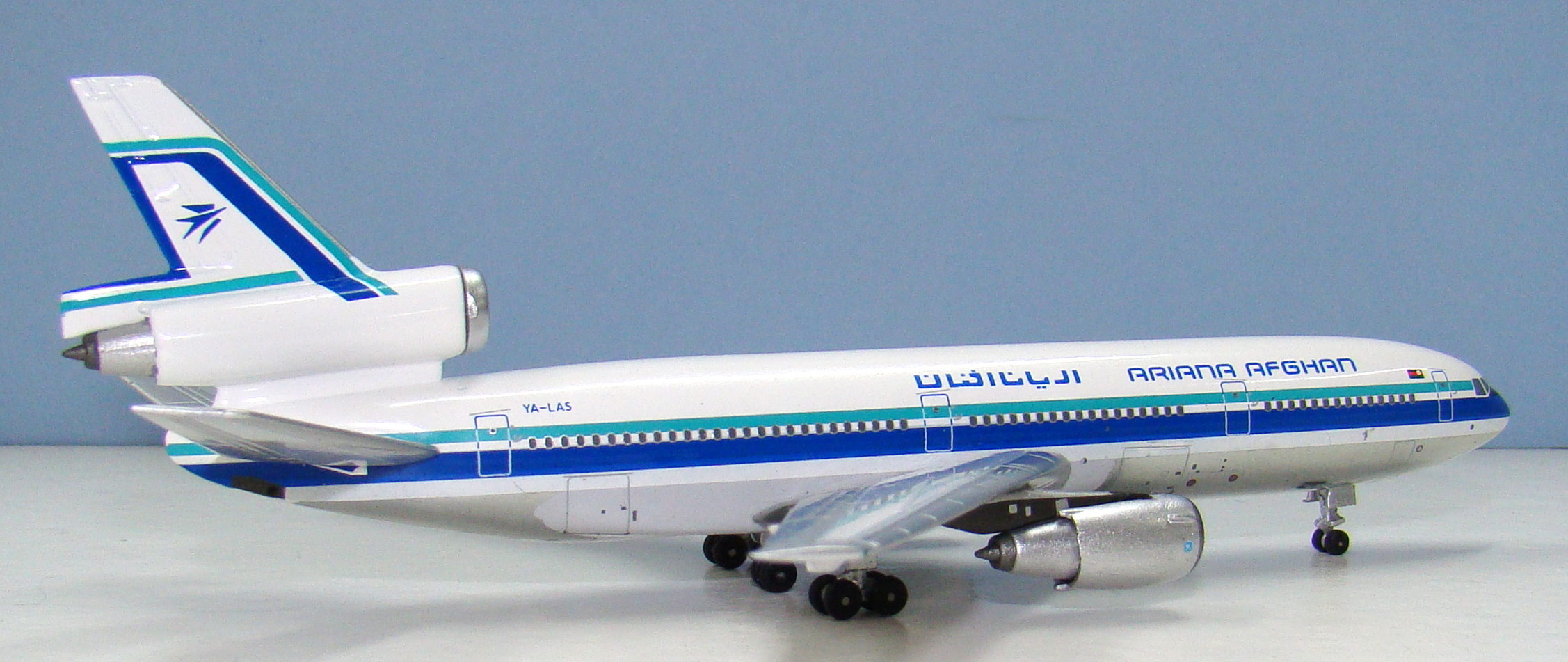
It would be nice is Aeroclassics upgraded the mould to have the three aerials of the real thing but this is wishful thinking. As it is the mould stands as one of my favourites in 1:400 scale.
SCORE – 10
PAINT & LIVERY
Ariana is best known for the rich medium blue livery with a triangular cheatline coming to a point from the tail to the nose. This was not however the scheme worn during the 1970s and early 80s. Instead the early 727-100s and the DC-10 wore a very attractive and nowadays appropriately retro-styled livery. The scheme fits the DC-10 very well but oddly the 727 less so. It still includes the sharp bird logo of later schemes but rather than being one piece the bird has three sections.
The primary colours of the scheme are a dark blue and a teal green both of which Aeroclassics has successfully reproduced on the model. In fact this is the most successful livery I’ve seen from Aeroclassics in a while. All the major components are correct. The thick lower dark blue cheat is separated from the thinner upper teal one by white and both hit the cockpit and nose region where they should. The small black nosecone and cockpit anti-glare shield are correctly sized also.
Title fonts, national flags and the tail are also excellently crafted to make this a perfect representation of the real thing.
SCORE – 10
PRINTING & QUALITY CONTROL
Aeroclassics does lovely natural metal finishes and is happy to let the mould do the talking for lots of the detail on things like wings and tail surfaces. On this model it works excellently and the printing complements the mould textures nicely. My only point of complaint is that the underwing engines, lack some detail printing and have poorly applied paint. They do have a nice little engine manufacturer logo on them but alas they also have the usual Aeroclassics bright silver fanblades too.
In fact it is the engines again that are the only let down from a quality control perspective too, or at least the portside one. That engine has an uneven rear margin where it apparently has not been cut correctly from the sprig of whatever it was moulded on (the engine nacelles are plastic). In all other ways this is a lovely model.
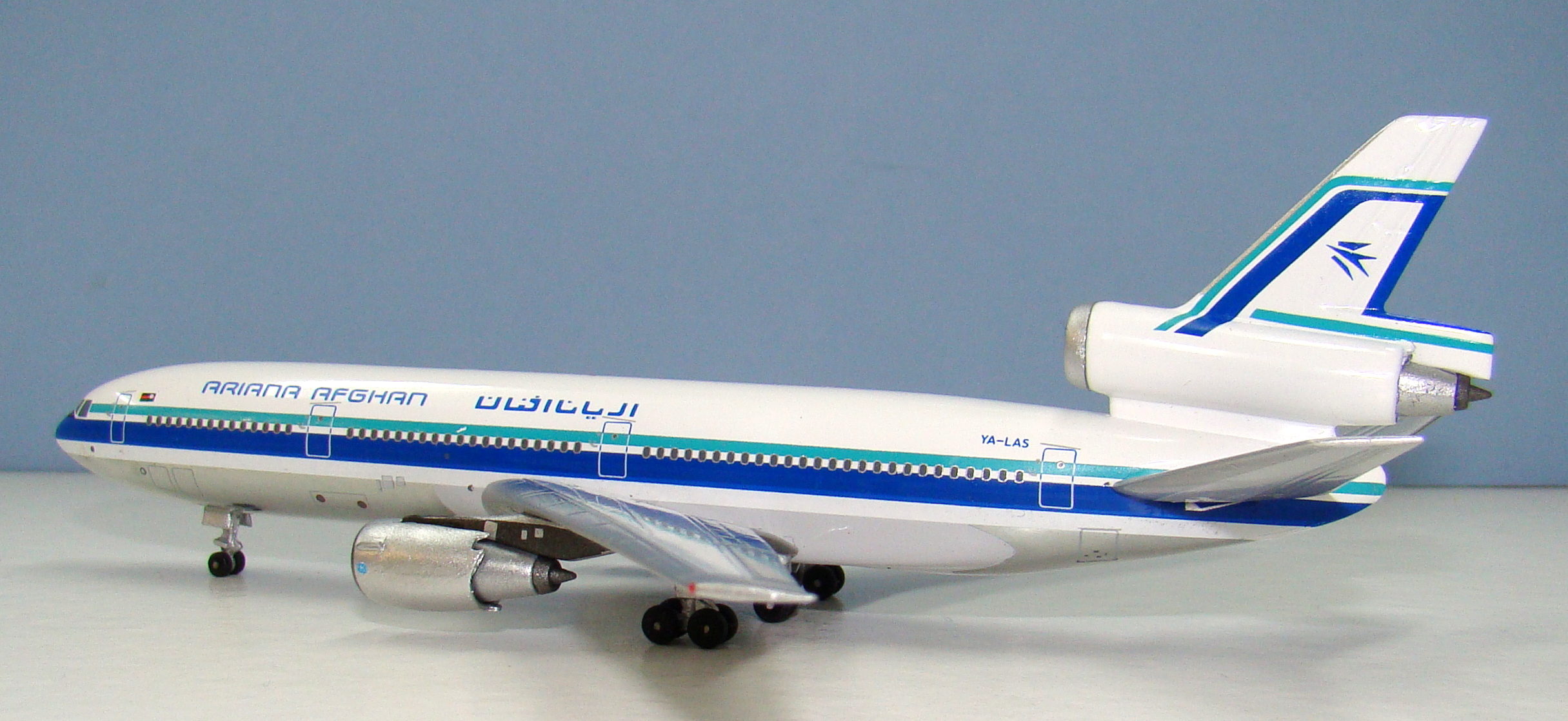
SCORE – 8
CONCLUSION
This model is easily one of my favourite models of 2018. Not only is it a beautiful mould but also an excellent livery for an important national carrier of a country that has been absent from my collection until now. I love it when Aeroclassics dip into more unusual country’s aviation history to bring us a gem like this. Even better this is a return to form for Aeroclassics, who must have had one of their top staff working on the design. As I understand it this model was made in very limited numbers (c.100 pieces), which is a shame as it is a model that deserves a wider audience. Nonetheless thank you for this one AC.
FINAL SCORE – 28


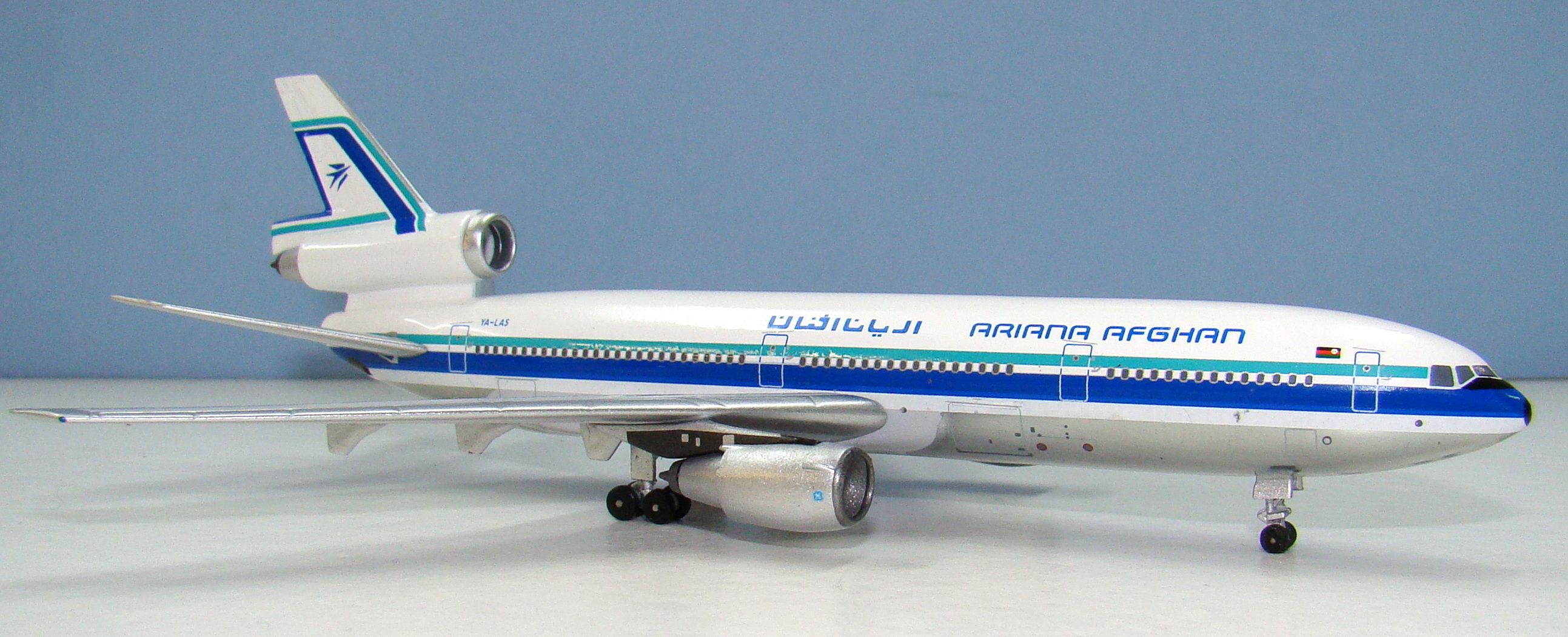
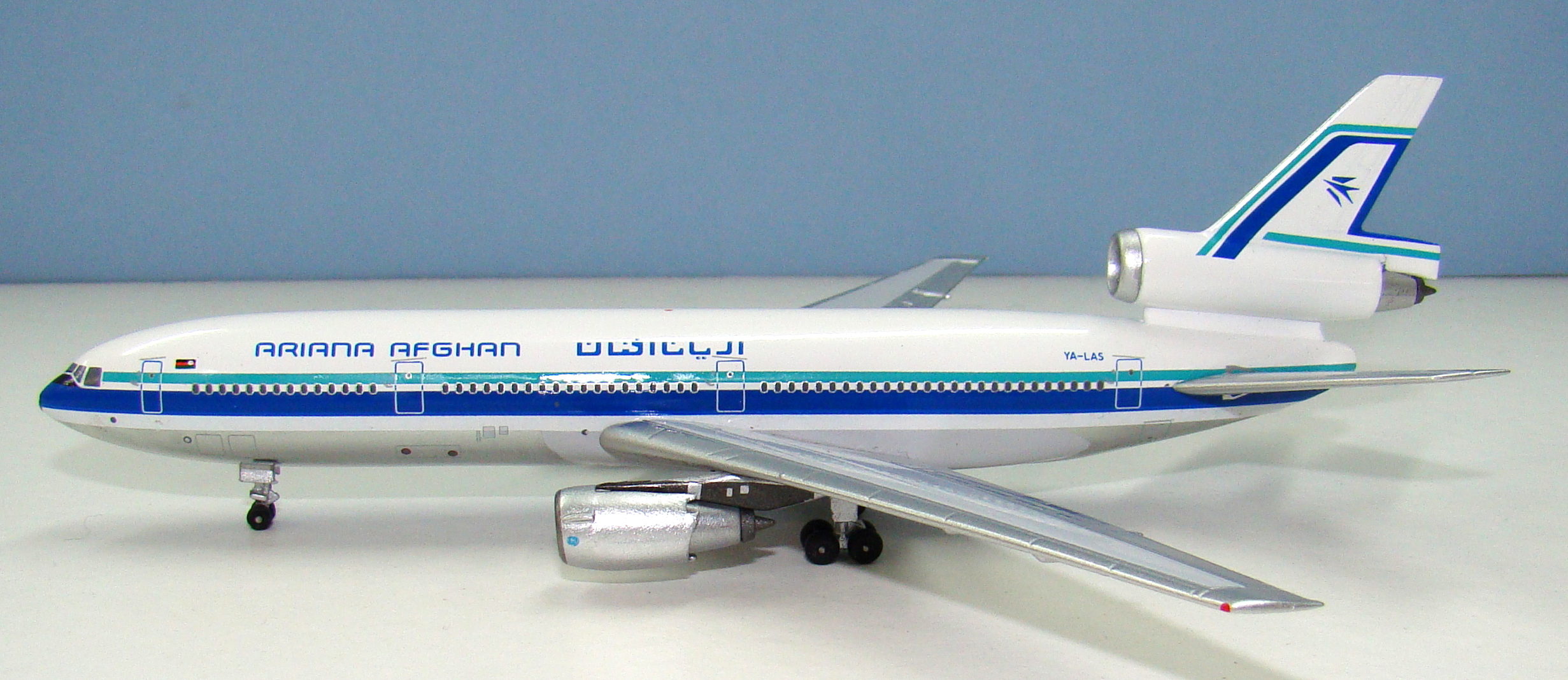
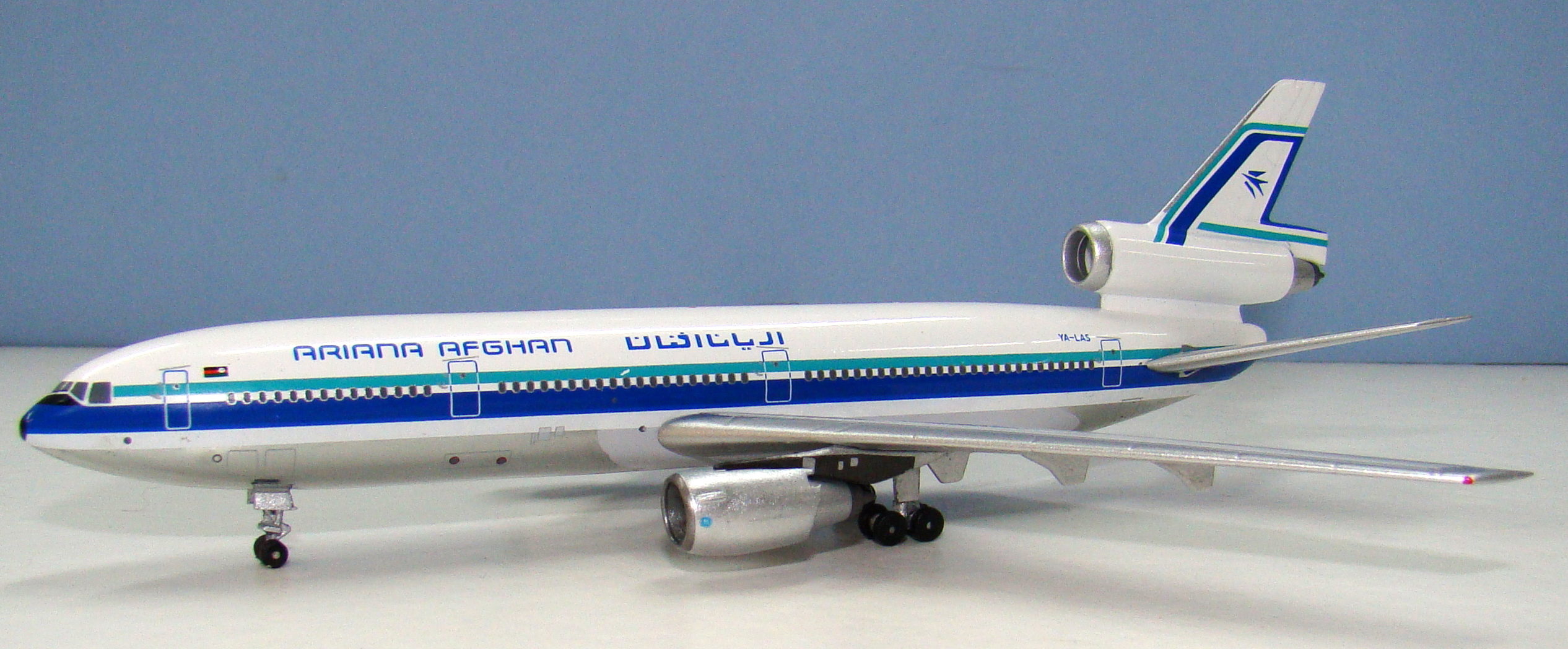
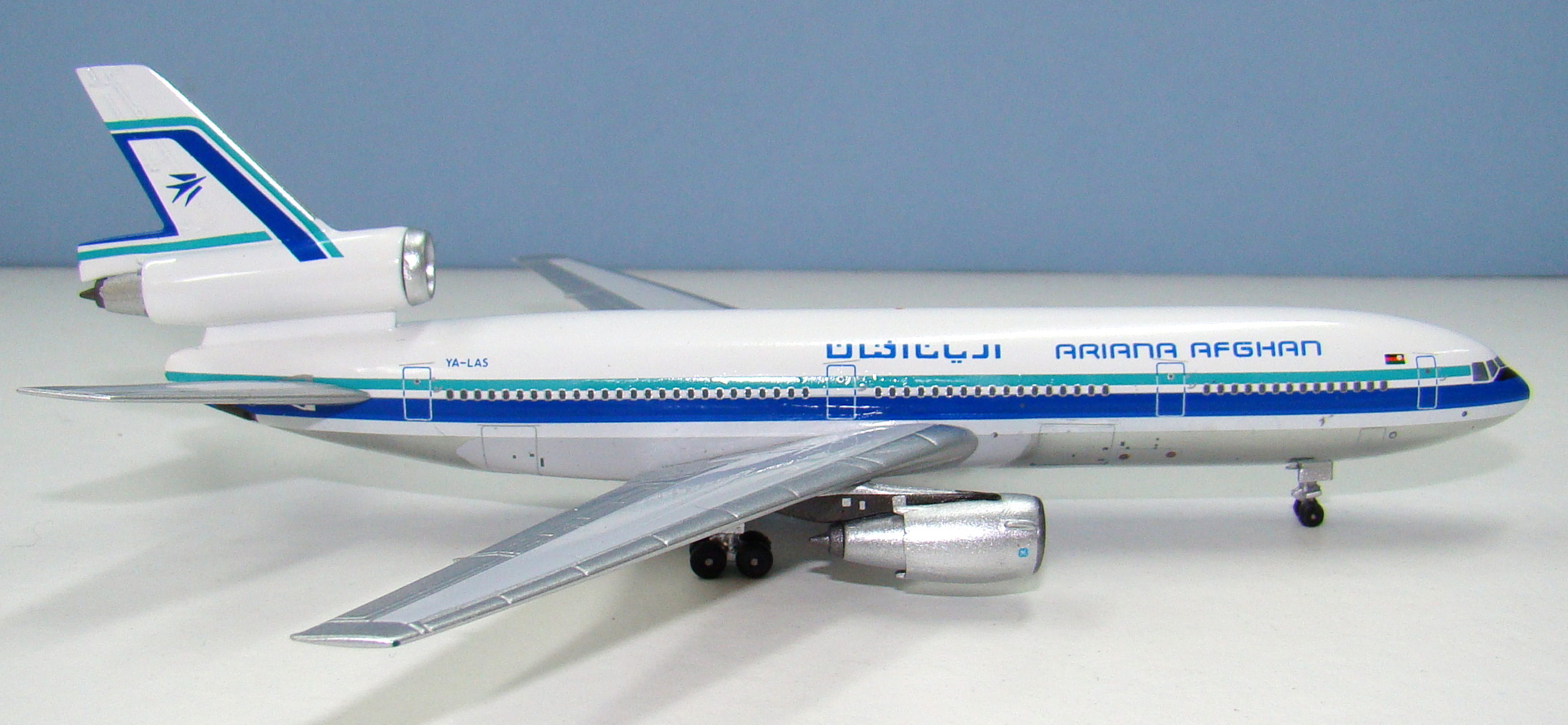
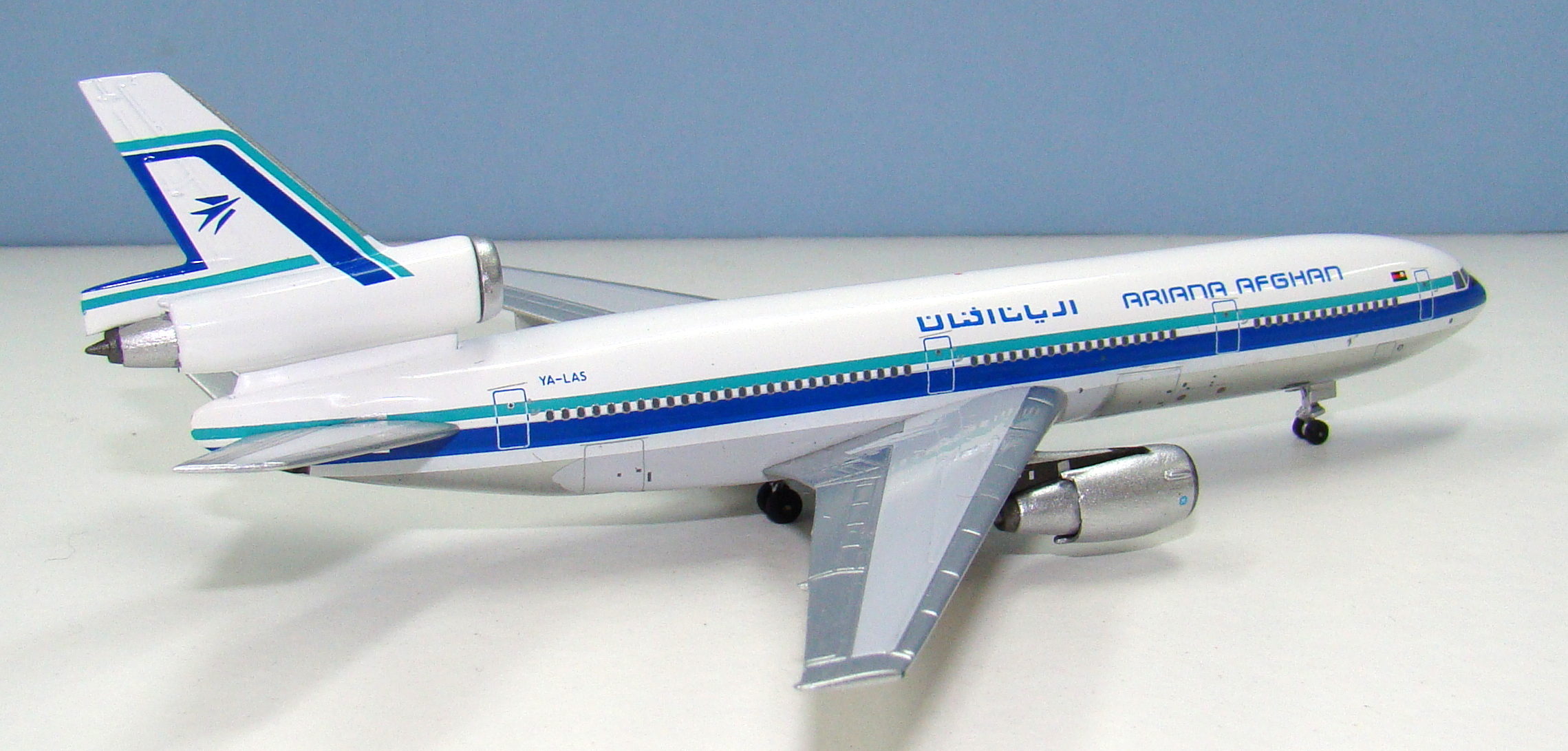
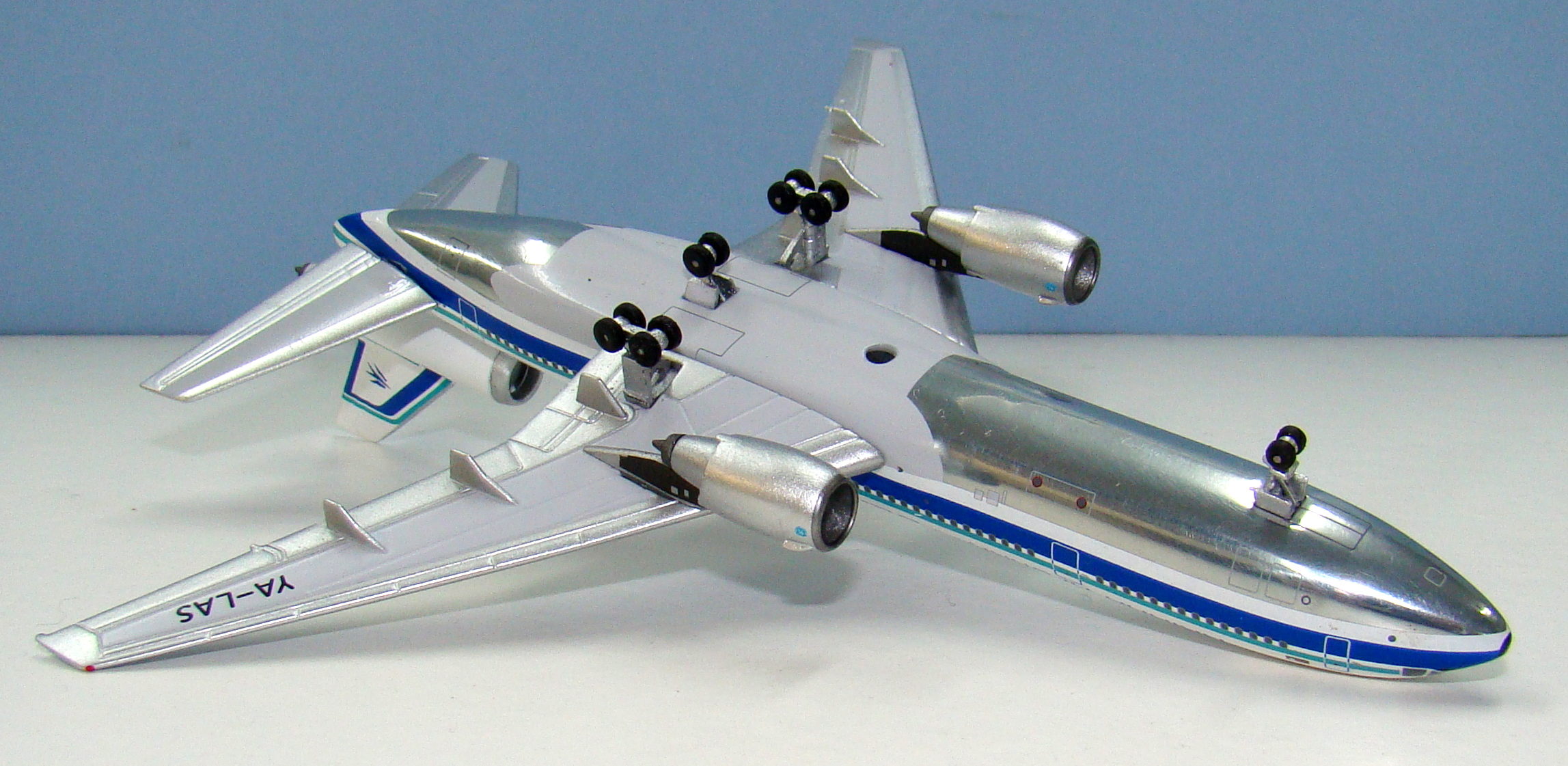
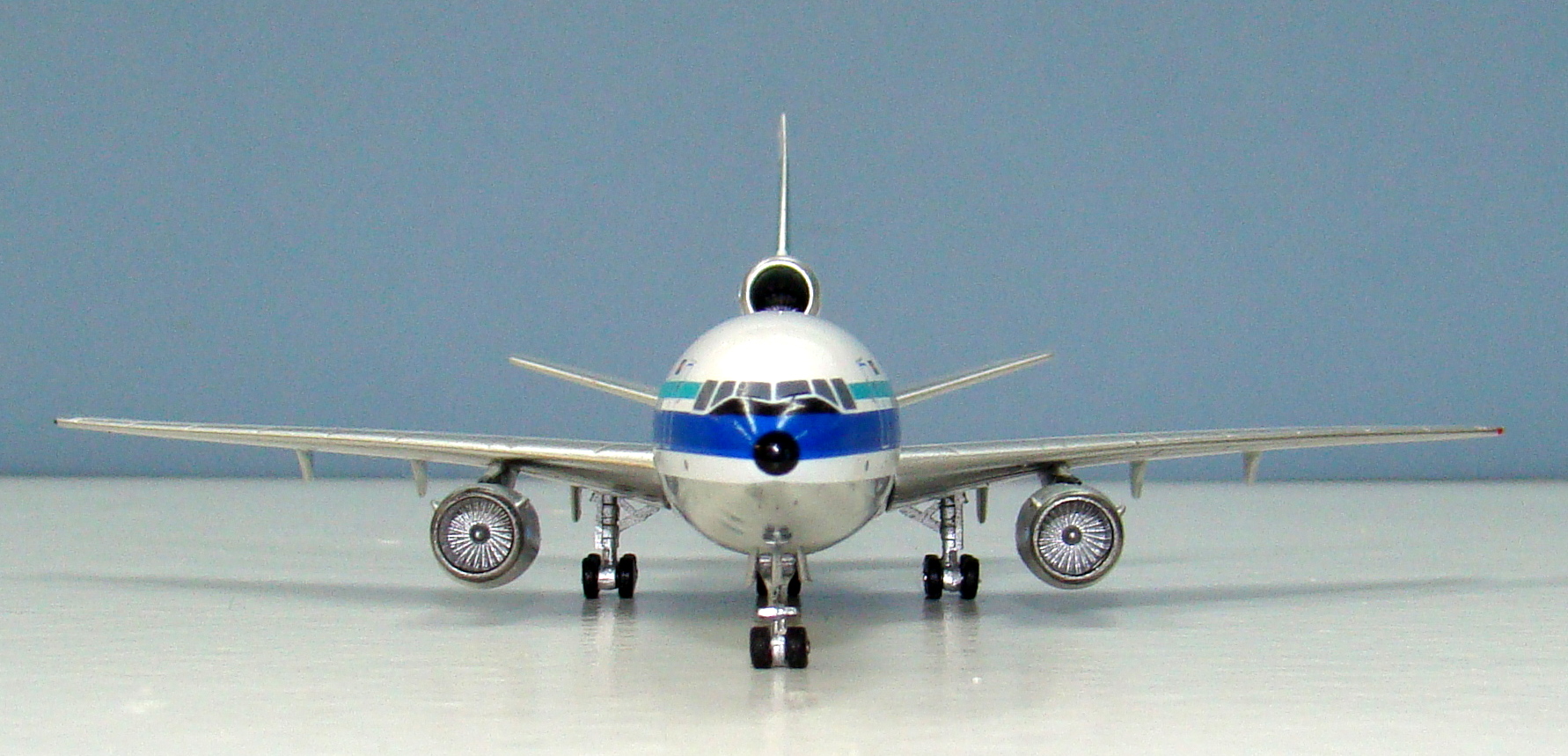
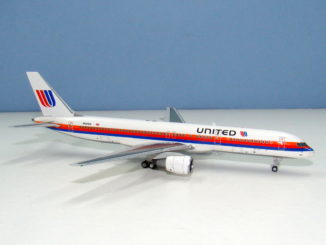
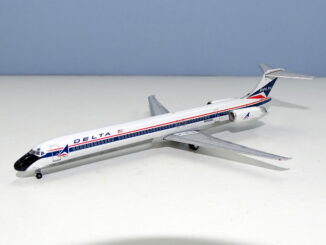
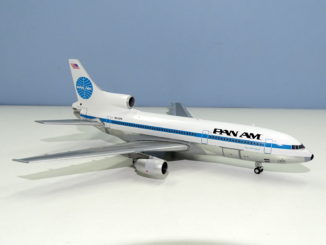
I also have this model and agree with the review – an excellent model that can now accompany my Gemini Ariana B727-200. Now we need an Ariana DC-6!!
This is a nice piece…Any out there for sale? I have the Gemini. As an Afghan, these are treasures of my past.